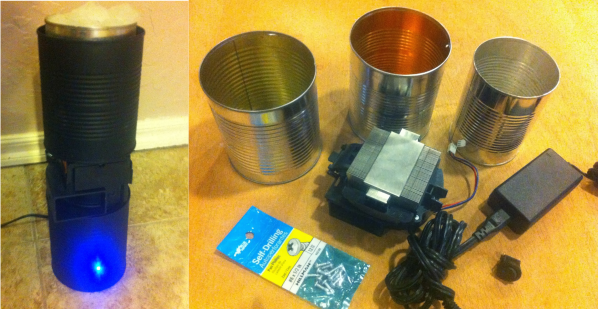Summer is here and with summer comes hot days. You probably know that us humans get uncomfortable if the temperature rises too much. Sure, we could turn on the loud and inefficient window AC unit and try to stay mildly comfortable while the electric company pick-pockets pennies from our change purse, but what is the fun in that? [Fran] had a better idea.
He noticed that his basement was always in the upper 50°F range regardless of how hot it was outside. He wanted the cool basement air to reside upstairs in the living area. After thinking long and hard about it he decided that a box fan and two long, skinny cardboard boxes assembled together would be enough to move the required amount of air. Both the fan and boxes were kicking around the house so was no cost and no risk to try this out. Continue reading “Zero-Dollar AC System Looks Funny But Works Well”














